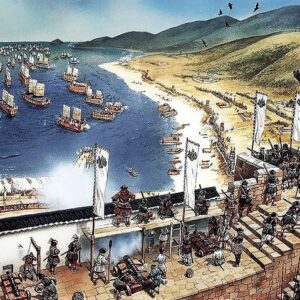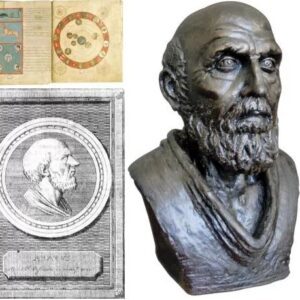The jaguar and eagle were symbolic predators that played a significant role in Aztec culture, and warriors would dress up to resemble one of them. The belief was that such an appearance would instill fear in their enemies. To join the Aztec battle groups, a new warrior had to capture an enemy soldier first.
The Aztecs had a well-established military system and a highly developed battlefield strategy. The Aztec warriors who used the macuahuitl would advance only when the archers or slingers approached the enemy. The macuahuitl was their most valuable asset in close combat.
Resembling a cricket bat, the macuahuitl had a length of about three and a half feet. While many examples of this weapon were wielded with one hand, some required two hands to hold and fight effectively.

Aztec warriors as shown in the 16th century Florentine Codex (Vol. IX). Each warrior is brandishing a maquahuitl.
The macuahuitl had four to eight razor-sharp blades on each side, depending on its size. Some versions had a complete single edge formed by obsidian, a volcanic material that could not be removed. The Aztecs wielded their swords with short and chopping movements, and, as many accounts suggest, they were able to decapitate both humans and horses.
In addition to the macuahuitl, the Aztecs also used the tepoztopilli, a polearm-like weapon made of wood with obsidian blades. At five to six feet in length, it was slightly longer than the macuahuitl.
Cortés’ conquistadors witnessed the power of the Aztec weaponry firsthand. Spanish horse riders reported that the Aztec swords were able to decapitate horses. The wounds inflicted were so deep that the head would remain attached only by the skin.
Contrary to popular belief, the macuahuitl was not an invention of the Aztecs. It was a weapon used by various groups in Central Mexico and other parts of Mesoamerica.
Christopher Columbus was fascinated by the macuahuitl when he encountered it after reaching the Americas. He ordered his people to collect a sample to take back to Spain.

This drawing, from the 16th century Florentine Codex, shows Aztec warriors brandishing macuahuitls
Today, there aren’t any original macuahuitl surviving, only various re-creations of the weapon based on knowledge extracted from contemporary accounts and illustrations produced during the 16th century or earlier.







